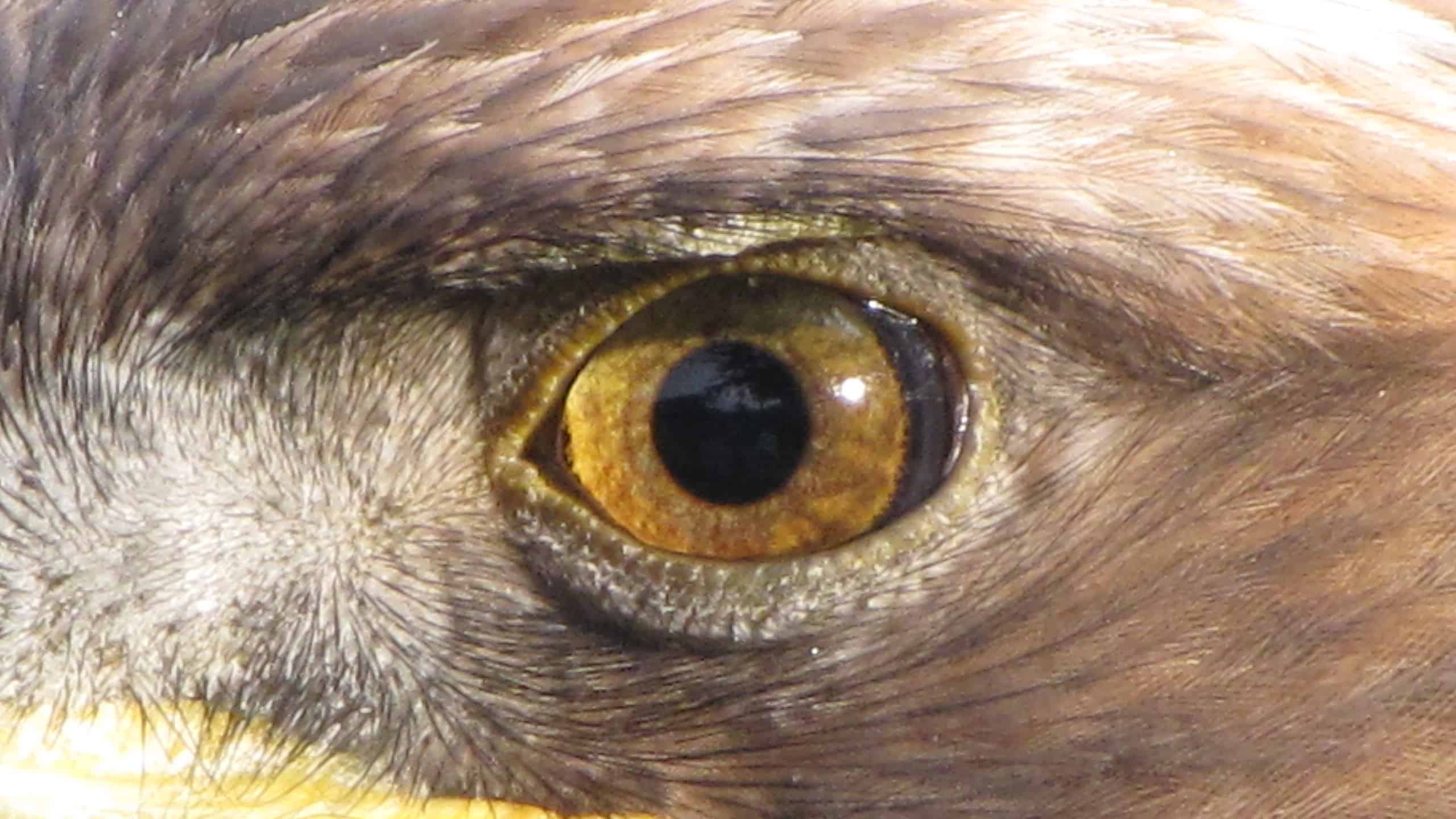Humans who spot something at a distance or pick out small details in a crowd might be called eagle-eyed, but in reality, eagles can see much better than the naked human eye could ever hope to achieve.
Eagles need better vision than humans because of their hunting patterns. These creatures’ sharp eyes allow them to spot prey as they fly far overhead. So just how far can eagles see?
How Far Can Eagles See?
Birds of prey have superior vision in more ways than one. Estimates suggest that eagles can spot and focus on an object from a distance of around two miles away. This allows them to see even small prey like rabbits from great distances.
Unlike humans, eagles cannot move their eyeballs from side to side. Each eye is fixed in its sockets. While this might seem like a disadvantage, eagles have a far greater range of head motion than humans. Their eyes are also angled 30 degrees from the midline of their face, giving them a 340-degree field of vision.
 Eagles’ eyeballs are fixed in their sockets.
Eagles’ eyeballs are fixed in their sockets.
©Peter Kaminski / CC BY 2.0 – License
Eagles’ incredible vision comes in part from the size of their eyes. Although eagles are much smaller creatures than humans, their eyes are about the same weight. According to a paper published in Research: A Science Partner Journal, eagle eyes account for 15% of the weight of their head. Human eyes make up only 2%.
Each eye of an eagle also contains two foveas. This is the point in the eye where visual acuity is the highest. In eagles, the median fovea is suitable for objects at long distances, while the lateral fovea plays a major role in observing objects close up.
How Much Further Can Eagles See Than Humans?
An eagle’s vision is anywhere from 4-8 times strong than that of humans. While the average human might have 20/20 vision, eagles actually have 20/5 vision. What looks clear to humans at 5 feet of distance is just as clear to an eagle from 20 feet away.
Eagles are able to see colors more vividly than humans. Bored Panda writes that birds such as eagles are tetrachromats. This means that they see four colors: UV, blue, green, and red, Humans are typically trichromats and can only see three colors: blue, green, and red. UV vision is very helpful for eagles on the hunt as it allows them to spot the urine trail of small prey.
What Animal Has the Best Eyesight?
Eagles and other birds of prey are thought to have the best eyesight in the animal kingdom, but many other kinds of wildlife have incredible visual abilities.
Mantis shrimp, for example, have extremely sophisticated vision. According to the Natural History Museum, mantis shrimp have 12-16 visual pigments compared to our three. They are also the only animals known to be able to see circular polarized light.
While eagles, hawks, and falcons have powerful eyes, their night vision is nowhere near as impressive as another bird of prey. Owls have some of the best night vision in the animal kingdom. It is thought that owl’s night vision is anywhere from 10-100 times better than that of a human.
 Owls have some of the best night vision in the animal kingdom.
Owls have some of the best night vision in the animal kingdom.
©C.M.Corcoran/Shutterstock.com
Which Bird Has the Weakest Eyesight?
In general, most birds’ vision is far superior to human vision. According to McGill, Canadian geese have some of the worst eyesight in the bird world, though they still see far better than most non-bird animals.
In New Zealand, scientists stumbled upon an incredible finding while studying 160 Okarito brown kiwis (Apteryx rowi) in the Okarito forest on New Zealand’s South Island. Many of these birds had eye lesions and a third of them had eye problems, writes New Scientist. Researchers also found three completely sightless birds.
Despite their blindness, the sightless birds were in good physical condition. This study suggests the possibility that these creatures may be evolving to lose their eyesight altogether. Vision may not be necessary since these creatures can use their senses of smell, hearing, and touch to hunt.
In another study reported by the Australian Broadcasting Corporation, researchers discovered that Australia’s elusive night parrot may be in decline due to an issue with their eyesight. While these birds can fly, they appear to be having trouble seeing in the dark, leading to these creatures running into things.
Eagle v. Human Vision
Eagle VisionHuman VisonVisual Acuity 20/520/20Field of Vision 340 degrees180 degrees Foveas per EyeTwoOne Weight of Eyeball28 grams 28 grams Color Vision TetrachromatTrichromat

